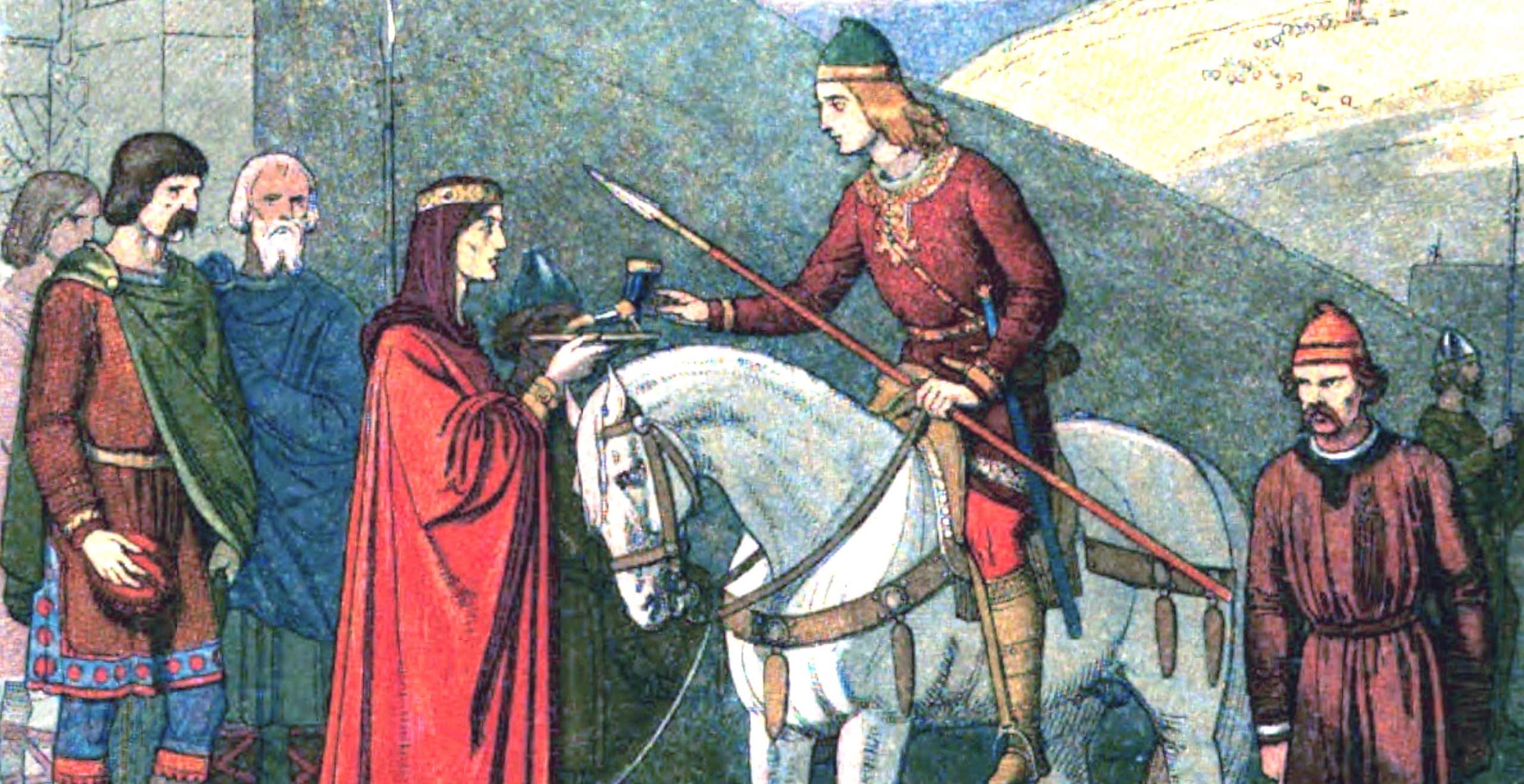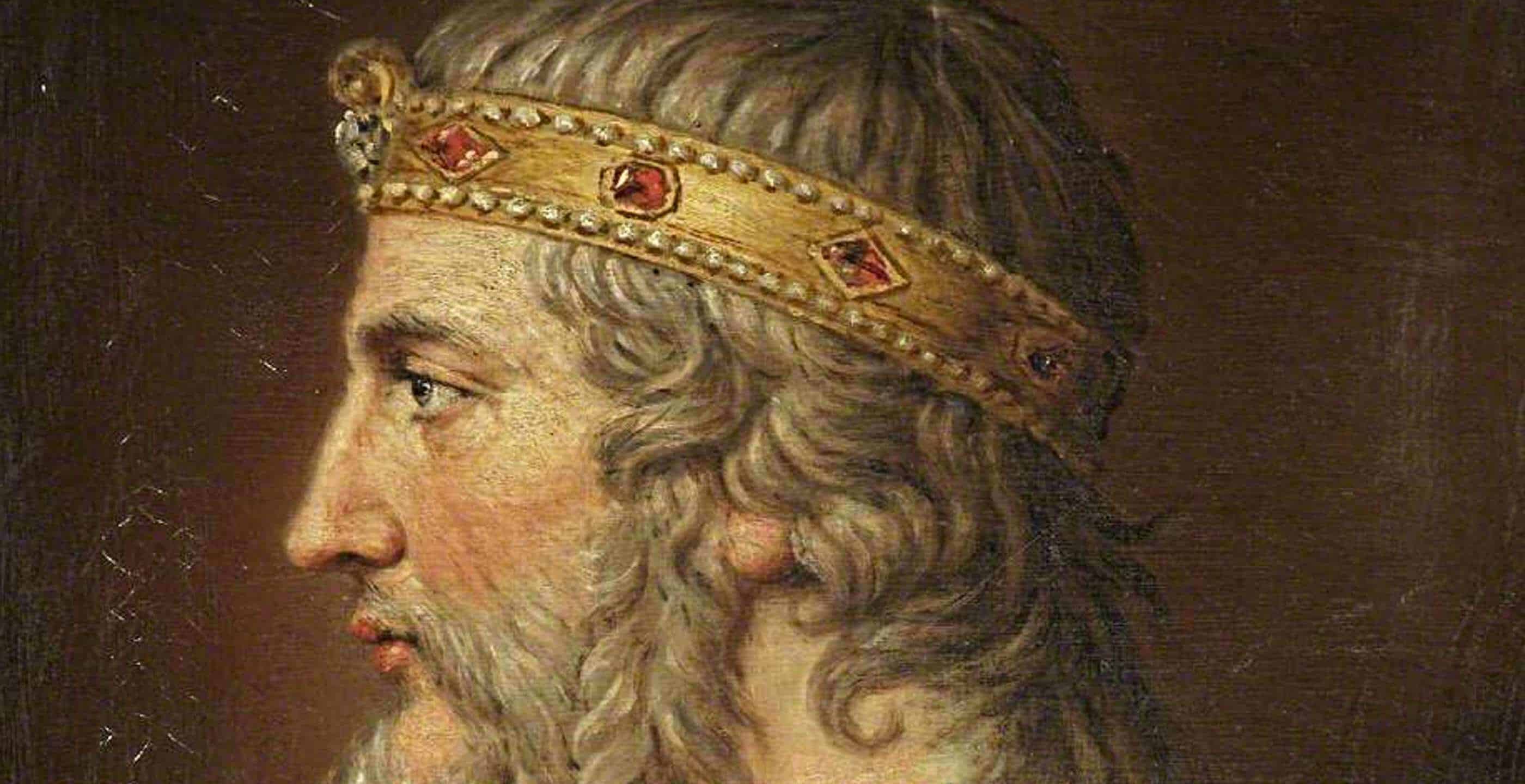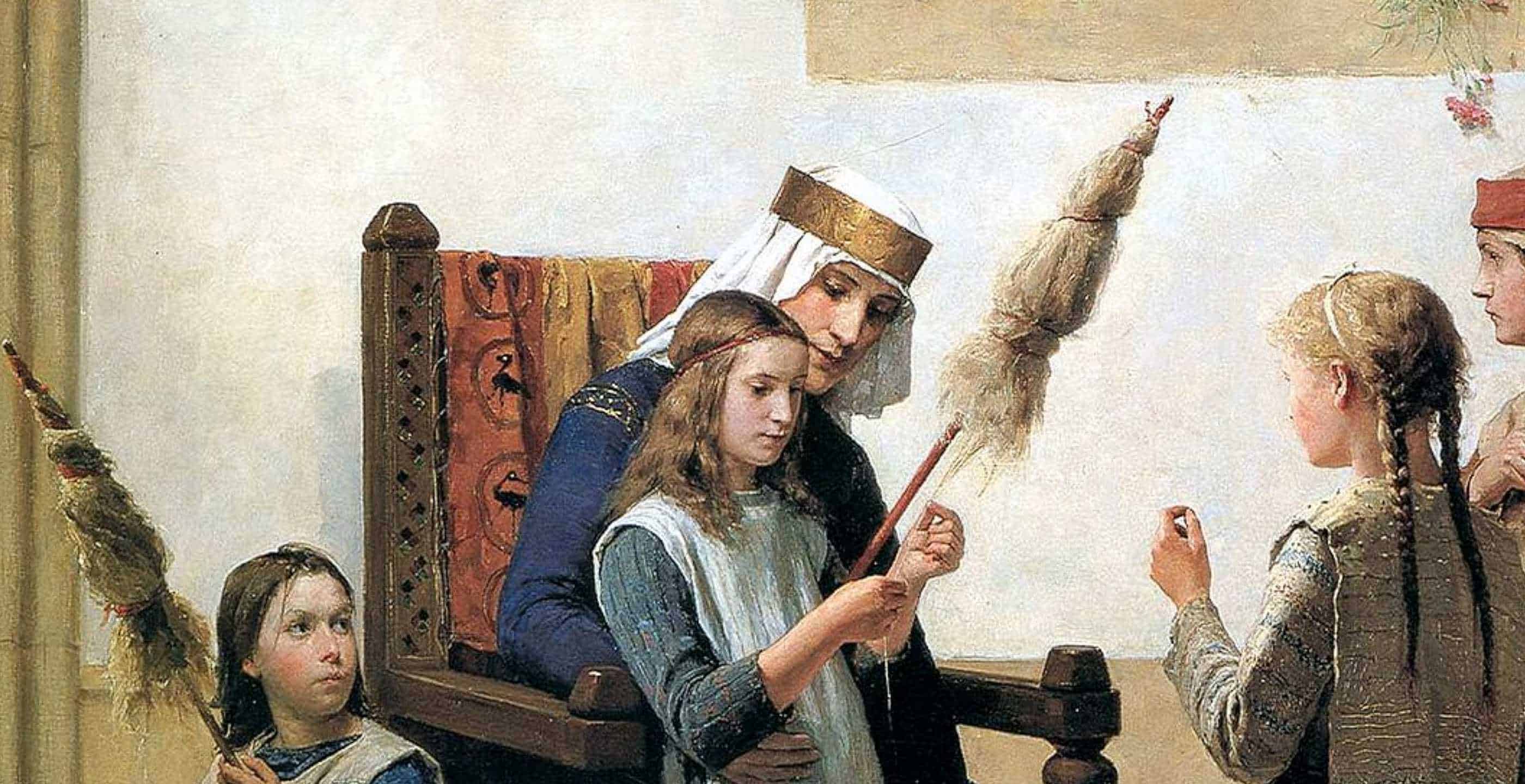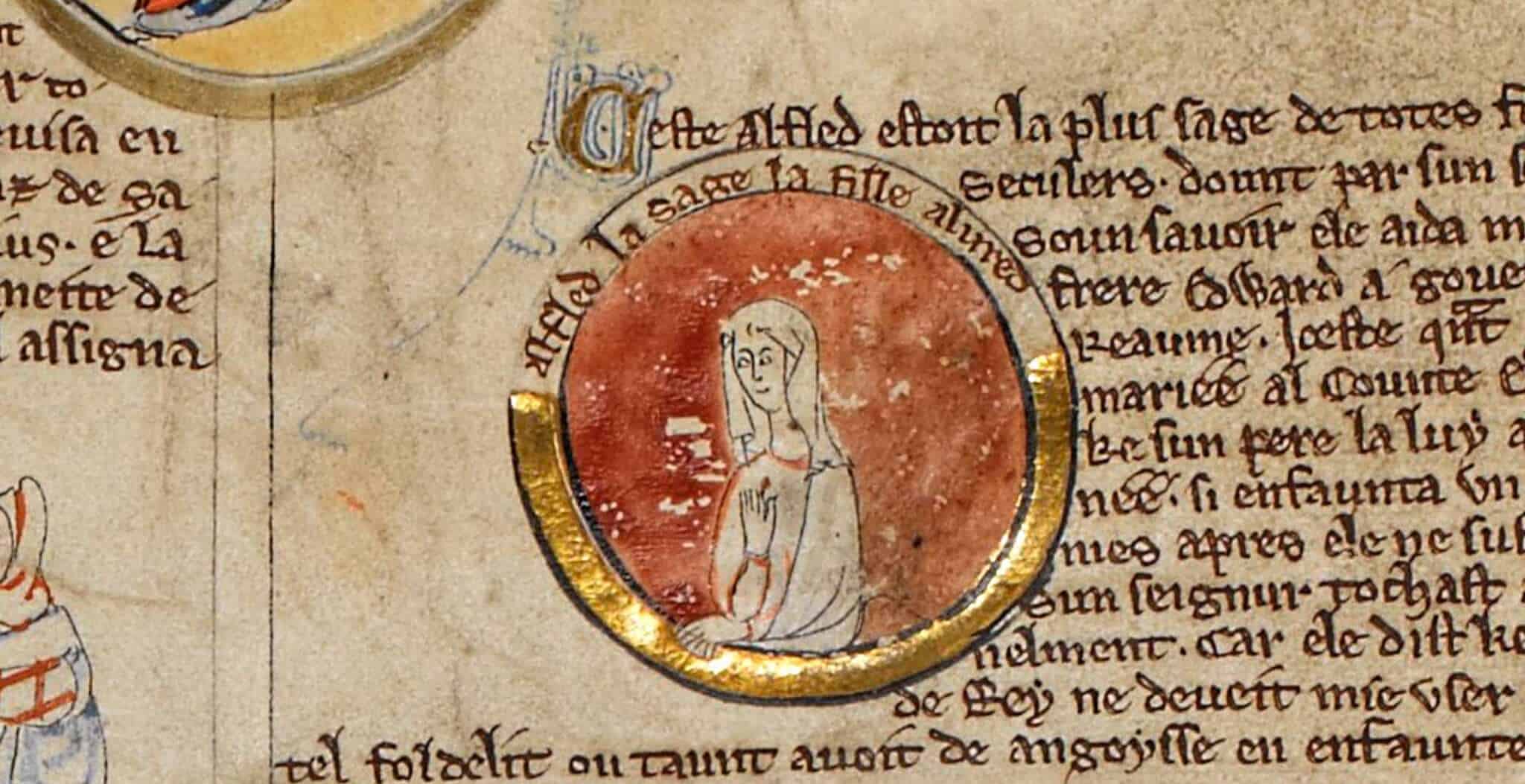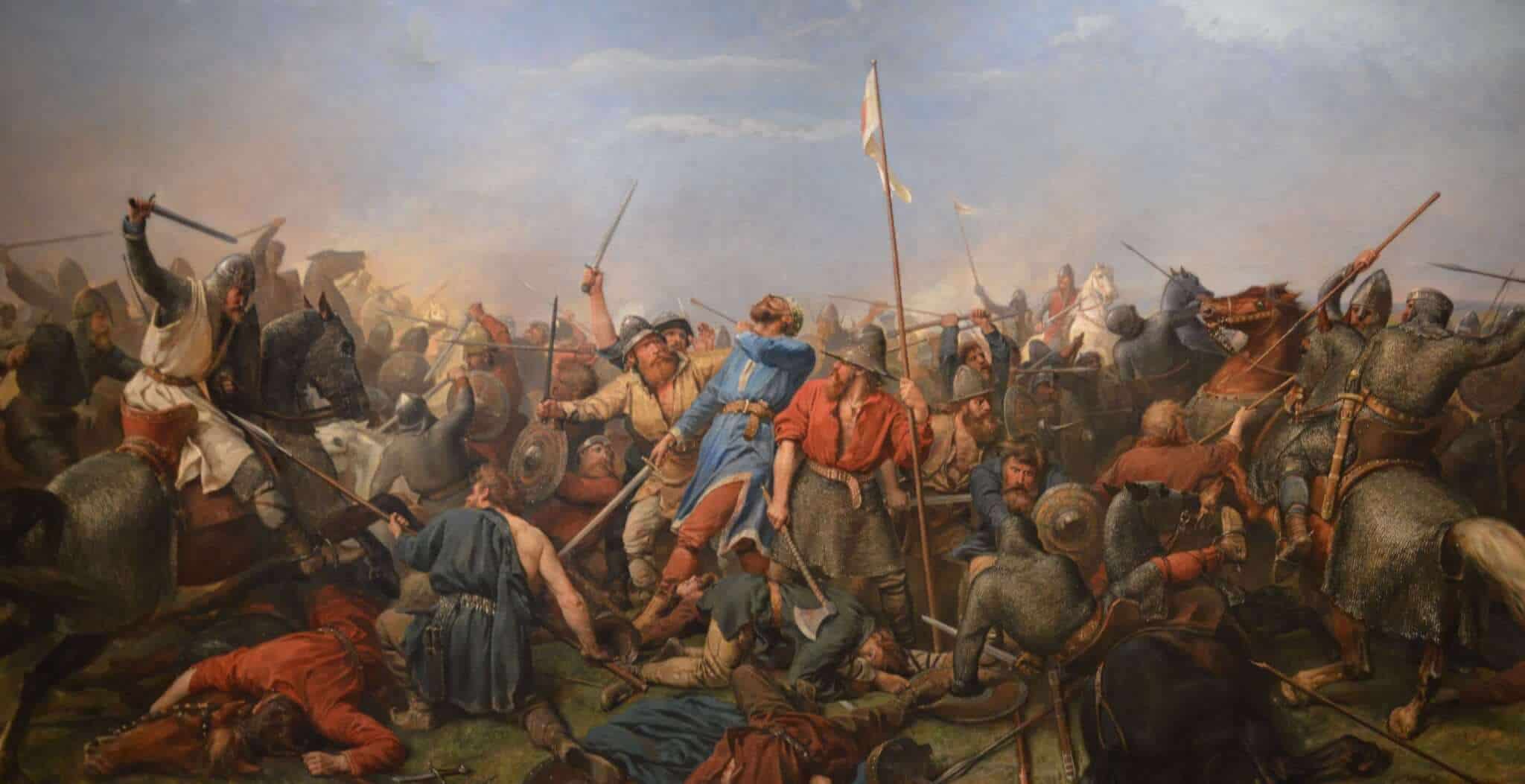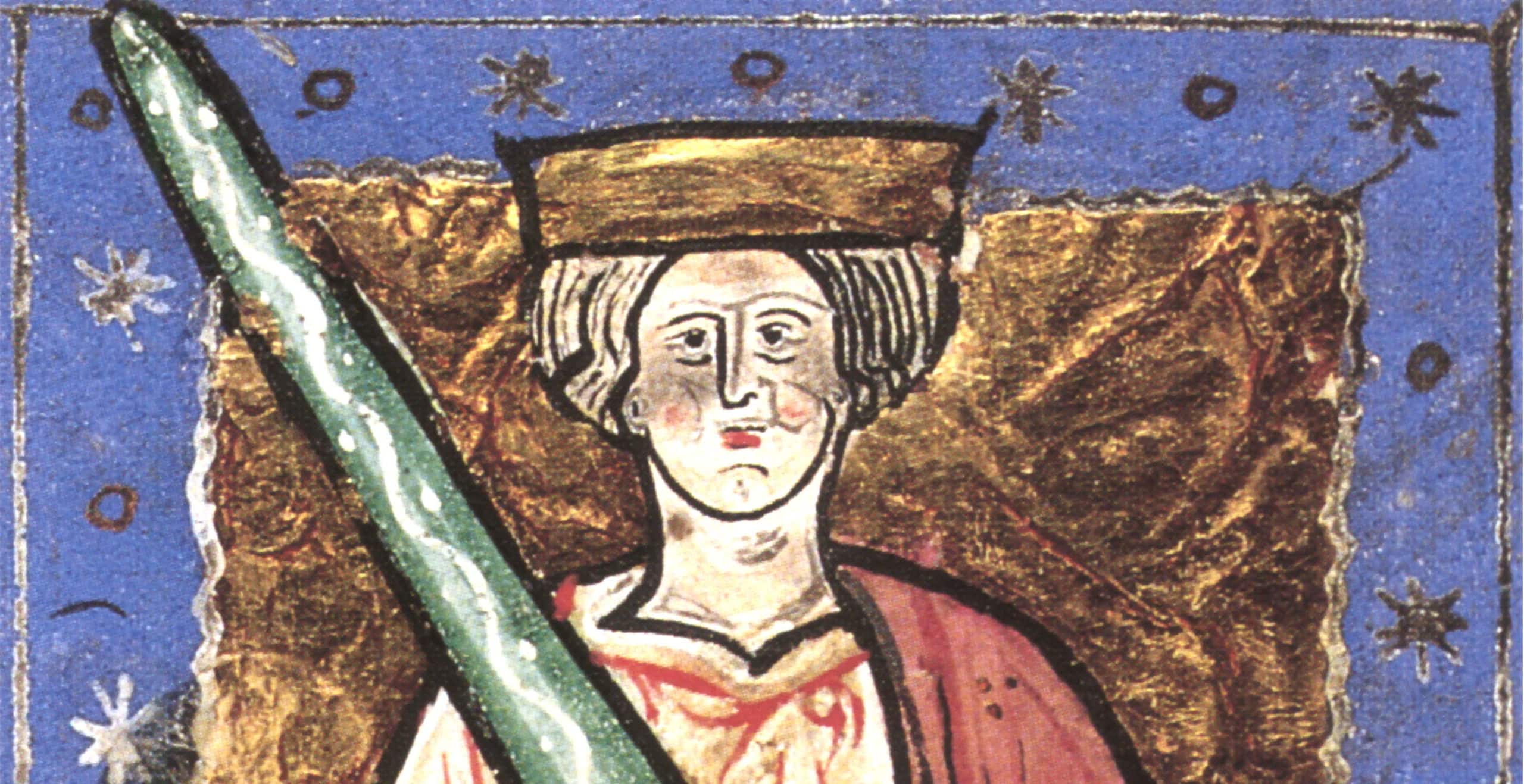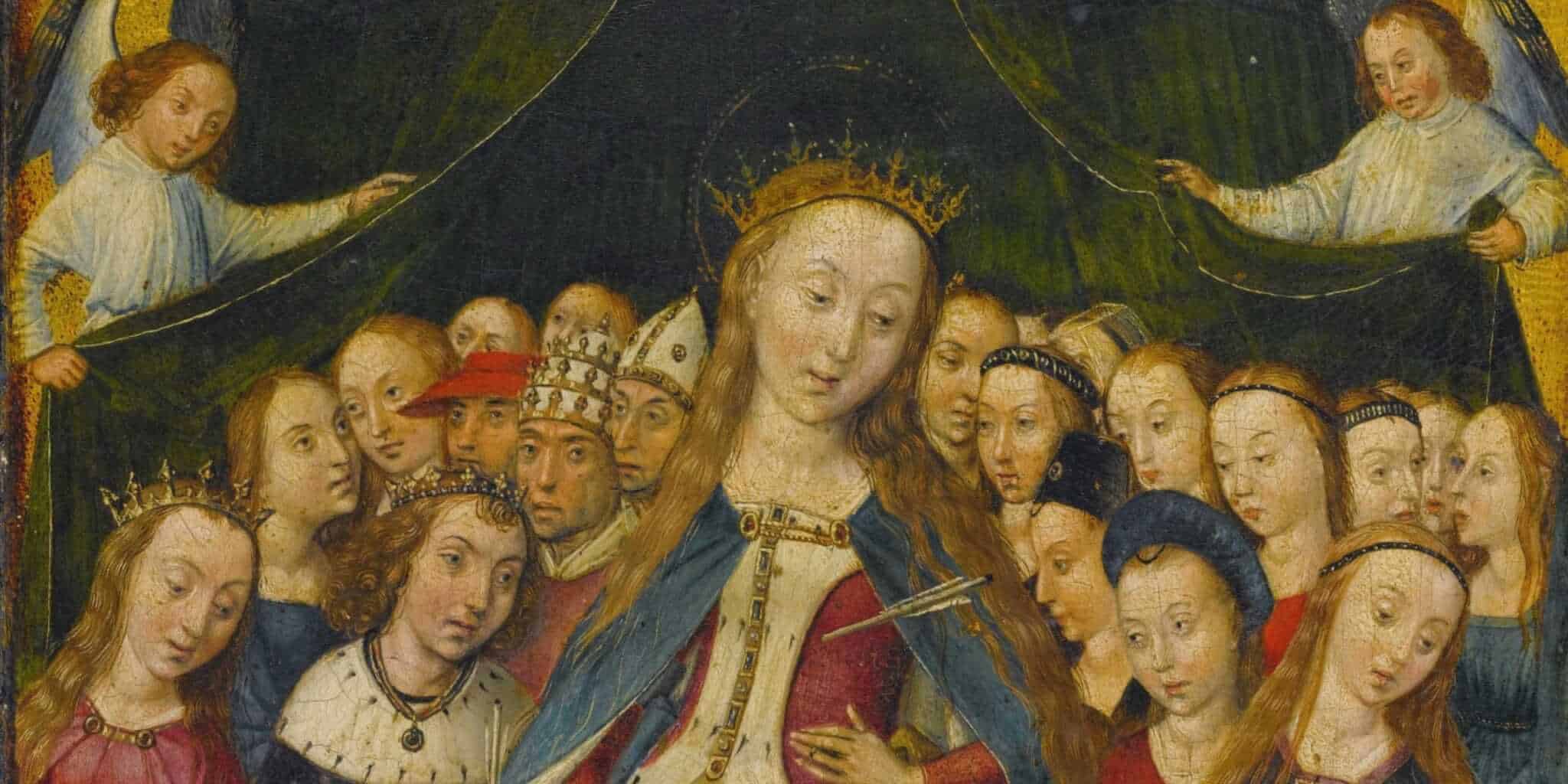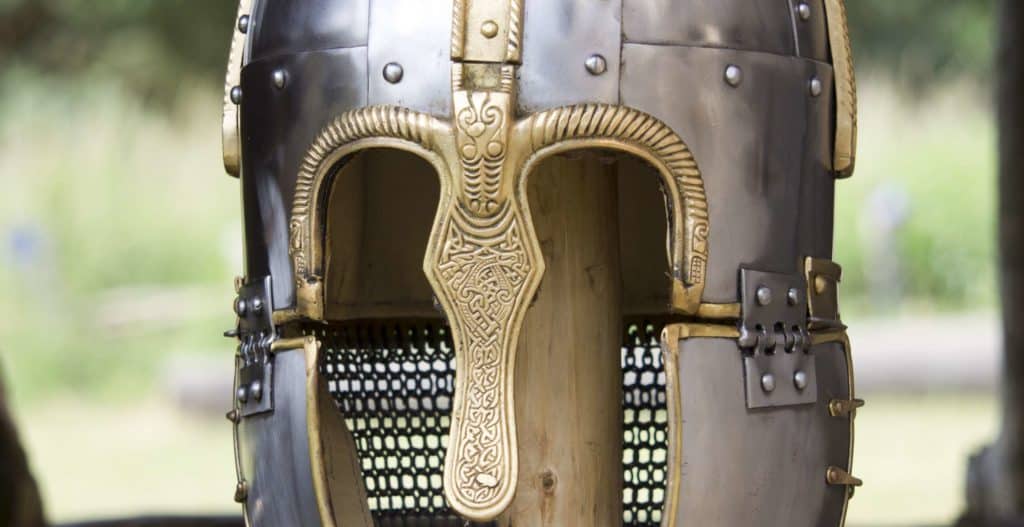It is easy to assume that the wife of the King was always graced with the title of Queen, but that has not always been the case in England. Borrowing from the tradition of Wessex, the ‘last kingdom’ of Britain that absorbed the rest of the Anglo-Saxon Kingdoms into its fold, the consorts of Kings were not anointed as Queens. One woman, however, defied the odds. Aelfthryth – also known as Elfrida – the consort of King Edgar the Peacable was anointed Queen during her husband’s second coronation on 11th May 973.
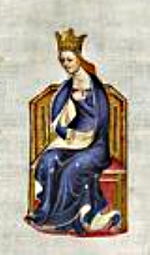
Aelfthryth had a storied rise to her position as Queen. Originally from Devon, she was the daughter of Ealdorman Ordgar, a prodigious landowner across numerous parishes, and an un-named mother with royal lineage from the house of Wessex. Her parentage, along with her famed beauty, made her an ideal choice for the role of consort to King Edgar of England. The King sent Aethelwald, a close confidant and the son of the notorious Athelstan Half King, to see if Aelfthryth was beautiful as rumored and fit to be his next wife. Aethelwald reported back that she was “misshapen, ugly, and dark,” before choosing to wed her himself. The rumors of her beauty continued to reach the king, even after he had agreed to stand as the godfather of Aethelwald and Aelfthryth’s first son, and he grew suspicious enough to insist on meeting the now-married woman himself.
Accounts from a hundred years after their meeting claim that Aelfthryth’s husband requested she dress in drab clothing and play down her appearance, but she defied him by dressing in the grandest finery to impress the King. The King was taken with her as she was with him and a few years later in 962 the pair were married, two years after Aelfthryth was widowed.
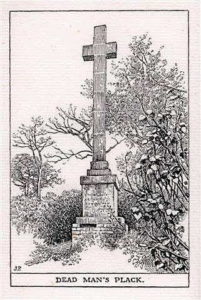 Dead Man’s Plack, erected in 1825 at Harewood Forest, is a Grade-II listed 19th-century monument to Æthelwald who, according to legend, was killed in 963 near the site where it stands by his love rival, King Edgar.
Dead Man’s Plack, erected in 1825 at Harewood Forest, is a Grade-II listed 19th-century monument to Æthelwald who, according to legend, was killed in 963 near the site where it stands by his love rival, King Edgar.
Conveniently, Aelfthryth’s first husband, Aethelwald, had died after the meeting – either from an illness or from being run through with a javelin by the king while hunting – depending on which sources you consult. Aelfthryth and King Edgar’s love story continued to have its twists and turns, including accusations of adultery by the long-powerful Dunstan, Archbishop of Canterbury.
Aelfthryth was officially crowned Queen in 973, during King Edgar’s second coronation, though some accounts also claim she was initially coronated shortly after their marriage. The reason for her coronation is not known, but it is often speculated that it occurred to strengthen the legitimacy of their marriage and push her sons with King Edgar to the top of the line of succession. The coronation made Aelfthryth the first and only Anglo-Saxon English Queen consort to be crowned, as the crowning of Queens was not standardized until after the Norman conquest in 1066.
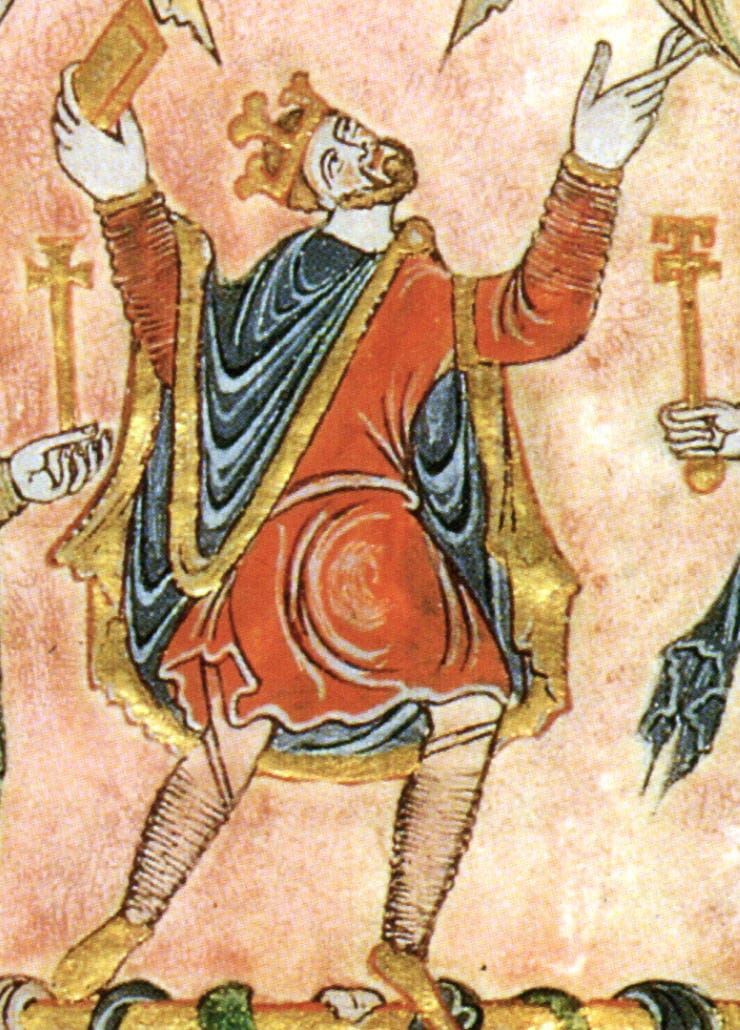
So why was Aelfthryth the first and only anointed Queen Consort of England until after the Norman conquest? The dislike of anointing Queens is said to stem from from one murderess Queen of Wessex, Queen Eadburh. Eadburh, daughter of King Offa of Mercia, was married to King Beorhtric of Wessex in 789 and was given the title of Queen upon the marriage. Though there are no contemporary reports of her time as Queen, Asser, the well-known chronicler of King Alfred the Great during his reign nearly one hundred years later, recorded that King Alfred’s own wife was not given the title of Queen due to Eadburh’s treachery.
Asser described the story of Eadburh saying, “As soon as she had won the king’s friendship, and power throughout almost the entire kingdom, she began to behave like a tyrant after the manner of her father — to loathe every man whom Beorhtric liked, to do all things hateful to God and men, to denounce all those whom she could before the king, and thus by trickery to deprive them of either life or power; and if she could not achieve that end with the king’s compliance, she killed them with poison,” (Life of King Alfred, section 14).
From the reign of King Beorhtric on, all future wives of Kings in Wessex would be stripped of the title of Queen due to the treachery of Eadburh, “West Saxons do not allow a queen to sit beside the king, nor to be called a queen, but only the king’s wife [because of] a certain obstinate and malevolent queen [from Mercia], who did everything she could against her lord and whole people,” recorded Asser (Life of King Alfred, section 13).
Only one woman did earn the title of Queen in Wessex after Eadburh; Judith of Flanders was crowned Queen upon her marriage to King Aethelwulf of Wessex in 856 due to the insistence of her father, Holy Roman Emperor Charles the Bald. Queen Judith’s coronation was a unique exception that was granted due to the status and power of her father.
As King Athelstan of Wessex was the first king to truly unit all of England, the customs of Wessex took precedent in the combined kingdom, which led to the continuation of the tradition of not crowning the king’s wife as Queen. Aelfthryth holds a unique place in history as the first anointed Queen Consort of England and the only Anglo Saxon Queen Consort. What is considered by many to be an assured title was nearly impossible to earn for hundreds of years of British history yet, through either love, politics, or treachery, Aelfthryth was able to secure a position as anointed Queen and secure her lineage’s position in England’s history.
Madison Zimmerman is a Marketing Professional with a degree in International Relations and History. She has a passion for all things British History, with a particular affinity for the Early Medieval and Tudor periods.
